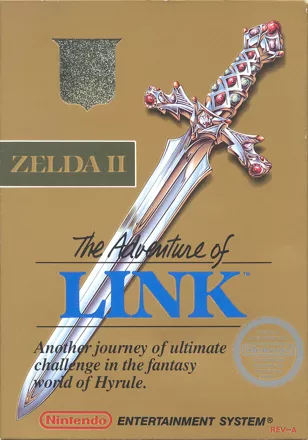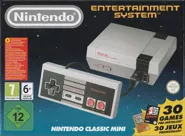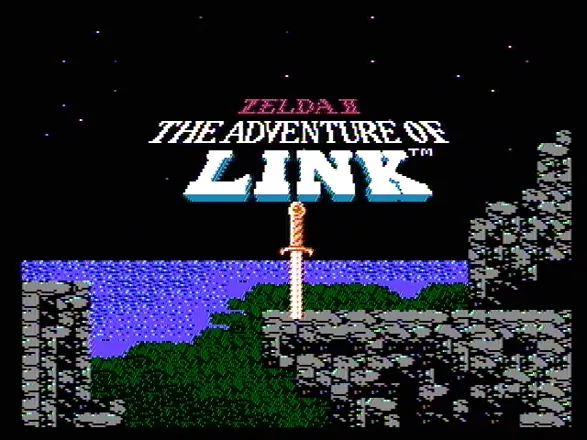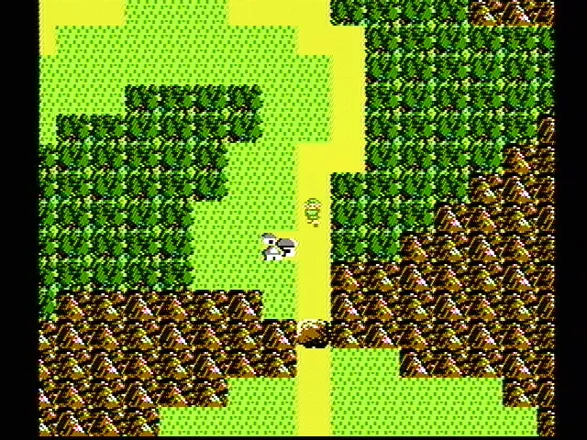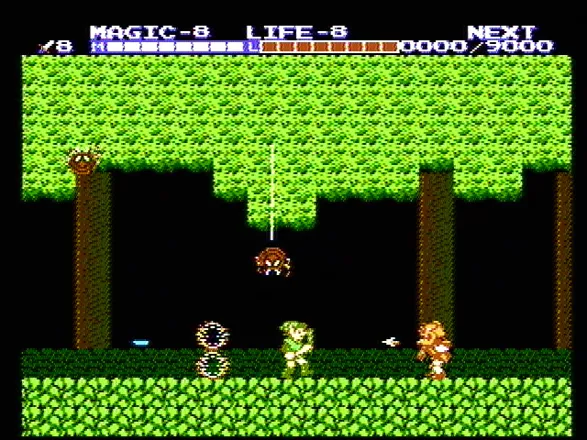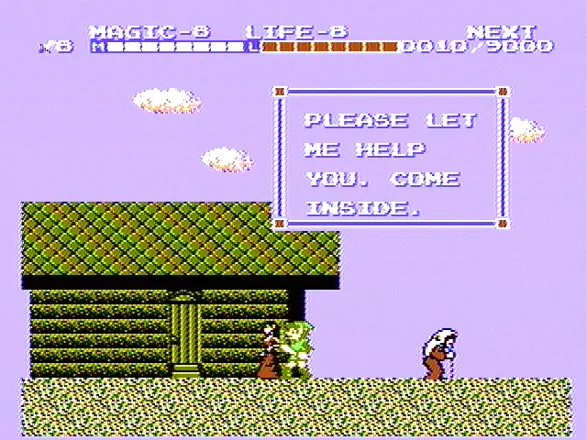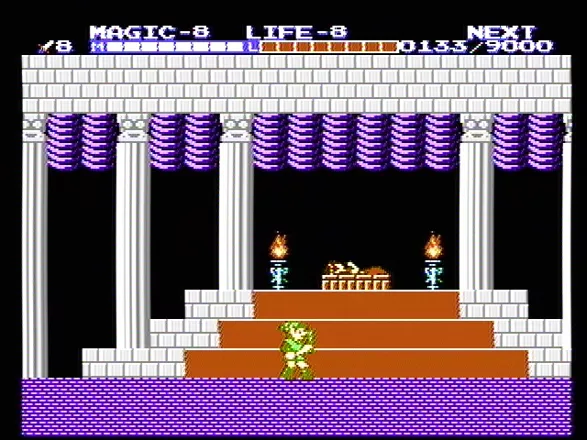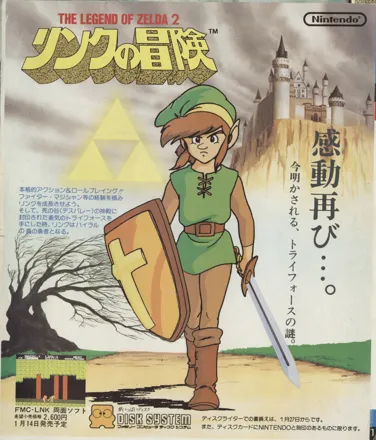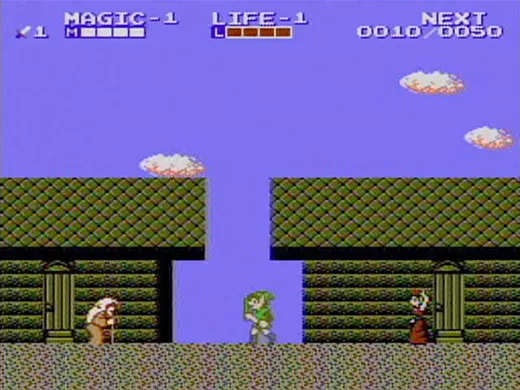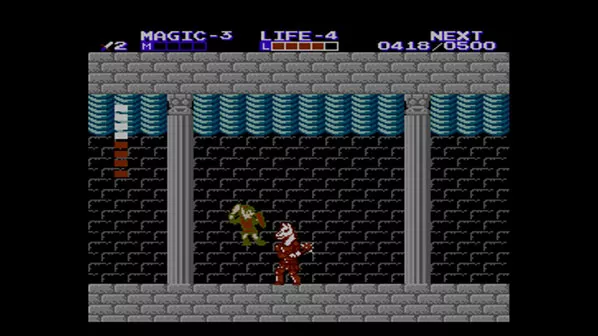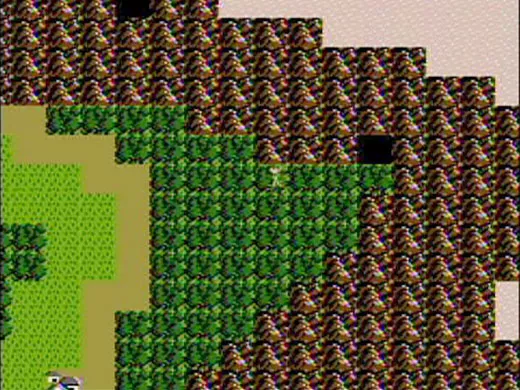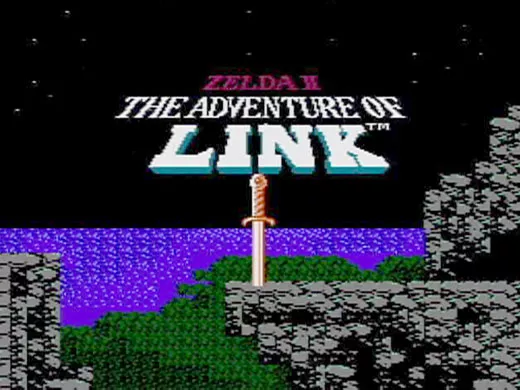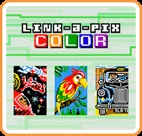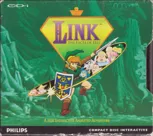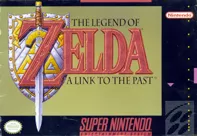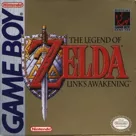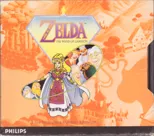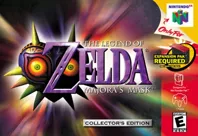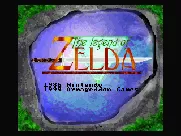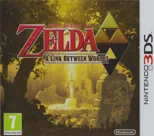Zelda II: The Adventure of Link
Description official descriptions
Link has just turned sixteen, and discovers a strange birthmark on his hand. With the help of Impa, Zelda's nursemaid, Link learns that this mark is the key to unlock a secret room where Princess Zelda lies sleeping. When young, Princess Zelda was given knowledge of the Triforce of power which was used to rule the kingdom of Hyrule, but when a magician unsuccessfully tried to find out about the Triforce from Zelda, he put her into an eternal sleep. In his grief, the prince placed Zelda in this room hoping she may wake some day. He ordered all female children in the royal household to be named Zelda from this point on, so the tragedy would not be forgotten. Now, to bring Princess Zelda back, Link must locate all the pieces of the Triforce which have been hidden throughout the land.
Each piece of the Triforce is in a temple guarded by a powerful monster which must be defeated. At the same time, Ganon's underlings are still around and gaining in strength and number. It is said Ganon could be brought back to life by sprinkling the blood of the one who defeated him on the ashes - which was Link himself.
Zelda II: The Adventure of Link is an action role-playing game, and a sequel to The Legend Of Zelda. The gameplay alternates between a top-down view (when traveling the land) and side-scrolling perspectives (when fighting, in a temple, or town). In the top-down view, Link cannot do much except for walking: in the side-scrolling action view, however, he can fight, cast spells, collect items and talk to people.
When Link encounters an enemy in the wilderness, or enters a location which contains enemies, he can fight them with his sword. If Link is at full health, his sword can be thrown, but when he is hurt, he can only fight in melee. Link has a shield which protects him against some of the enemies' attacks if they strike the shield. Touching an enemy or getting hit by their attacks decreases Link's health. If he runs out of health, he loses a life. If he loses all his lives, it's Game Over. Link can replenish his health completely by encountering a fairy in the wilderness, or by using the services of a healer in a town.
Link also has a "magic" meter. He can cast spells (as long as he has learned them) if he has some magic power left. Spells cost a various amount of magic power. They have various effects: they cure Link, allow him to jump very high, shoot fireballs etc. The magic power meter can be refilled by collecting blue and red jars sometimes left behind by enemies.
When Link slays an enemy, it might leave behind an item, or give Link some experience. When Link gains enough experience, he gains a level, which allows him to buy weapon power, maximum magic, or maximum health upgrades for his experience points. The player can also decide not to buy anything and stockpile his experience points for later use.
There are some items to be found that are necessary to get past certain points in the game. The Adventure of Link features a battery backup so games can be saved without needing a password system.
Spellings
- リンクの冒険 - Japanese spelling
Groups +
Screenshots
Promos
Videos
See any errors or missing info for this game?
You can submit a correction, contribute trivia, add to a game group, add a related site or alternate title.
Credits (NES version)
10 People
| Executive Producer | |
| Producer |
|
| Director |
|
| Designer |
|
| Sound Composer |
|
| Programmer |
|
| Director |
|
Reviews
Critics
Average score: 77% (based on 52 ratings)
Players
Average score: 3.4 out of 5 (based on 196 ratings with 12 reviews)
Definitely the most challenging Zelda
The Good
Very, very challenging game. The side-scrolling parts make things much more difficult, especially later in the game; although, by dungeon #2, things have gotten pretty hard. This made for a very enjoyable game, especially when overcoming obstacles and accomplishing various objectives (getting items, raising levels, finishing underworld dungeons).
The Bad
Some parts of the game were just TOO difficult (i.e., Death Mountain -- getting the hammer...took me at least a week). The final dungeon (end of the game) is also very hard. By the time you get to the Thunderbird, you'll be lucky to have any life and magic left. Good luck beating him. I was never able to finish this game on the NES. It took me about 15 years from the time I bought it until the time I used cheat codes on a NES emulator to finish it. Using the original NES controller was almost impossible for this game. The NES Max helped a lot. The music is this game was also a little sub-par. Zelda 1's music was better, I thought.
The Bottom Line
A great sequel for Zelda 1. Play that game first (play it to death, since that is one of the greatest video games of all time), then get a hold of this. A step-up in challenge and graphics. Classic game.
NES · by J O (8) · 2004
The Good
I like side-scrolling games such as Mega Man and Super Mario Brothers 3, so naturally, I'm going to enjoy a well-designed action game with well-balanced elements, and intense combat(for the most part). The graphics are quite good for a late 80's NES game, but they aren't the best on the system(crisis force comes to mind). The sound is not as great as it was in the original Zelda, but it's still solid nonetheless.
The Bad
Zelda 2's main problem is it's rather difficult game play, especially when it comes to combat. Remember when I said the combat is intense? This is the reason why. Enemies have difficulty patterns to follow, especially the Iron knuckles, Link's sword is WAY too damn short, and most of the magic is only used in certain situations.
Again I say, the music isn't as good as the original Zelda.
The Bottom Line
Zelda II is a underrated gem of a game that gets too much bashing just for being a lot different from the original one. It's a solid game that is recommended and very playable, but it's not without flaws, especially where the difficulty is involved. I own Zelda II on Zelda:Collectors Edition on Nintendo GameCube(I play it on my Wii, actually)and I think it's pretty good. One of the better games in the NES library.
***GOOD STUFF***
Really fun combat
Excellent mix of RPG elements
Decent music
***BAD STUFF***
Really freaking hard!!!!
Inferior music to the original
Overall, I give Zelda II:The Adventure Of LINK about..... 8.5 out of 10
NES · by JohnLennon224 (13) · 2009
The difficult nature of this game is proof that Nintendo are hypocrites
The Good
The Legend of Zelda is one of Nintendo’s popular franchises, with the first game selling over 6.5 million copies. It came as no surprise that a sequel was released a year later subtitled The Adventure of Link, containing similar gameplay mechanics as its predecessor, while introducing new elements that made their way into future Zelda games. As well as the mechanics, the game shares similar box art, similar objective, and similar game mechanics. To top it off, it was even released on a gold cartridge.
The game comes with a 52-page booklet which starts off with a well-written story complete with detailed illustrations. This is followed by everything you need to know about the game, including how to get around Hyrule, the controls and the basic gameplay. There are even a few maps thrown in in case you get lost. This booklet is excellent, I regret not reading it first.
Link is now a teenager who needs to wake Princess Zelda from her slumber, and to do this he must recover the Third Triforce sealed inside the Great Palace, located somewhere in the kingdom of Hyrule. To break the seal, Link must venture inside six other palaces and place crystals inside well-guarded statues. Zelda is also not the same one from the first game, which is probably why this is the only title in the franchise to have numerals.
You begin your adventure inside North Palace. The music here starts off similar to the first game, but branches off in another direction, and that’s the only time you hear that similarity. As soon as you leave North Palace, you are presented with a map of the “overworld” where much of your time is spent following a yellow road to towns, more palaces, or hidden areas. Step off the road and you eventually do battle with monsters in a third-person perspective in a variety of environments such as forests, deserts, plains, swamps, and even graveyards. The purpose of these battles is to gain experience points, and trust me: you’ll need all the experience you can get before you reach the final destination. The music in these battle scenes is great, and the way you can hear Link wad through the swamp water is a nice touch.
A new addition to the Zelda franchise is the addition of non-playable characters. They are usually found in towns, walking around and going about their business. Some of the inhabitants will give you advice that will help you later, while others shrug you off. But in almost every town, one of the inhabitants asks you to find something valuable to them in return for a magic spell that will help you in your adventure, You need all the spells to finish the game. I like that one of them transforms Link into a fairy, allowing you to fly along the top of the screen when you don’t want to deal with an enemy.
As I mentioned, Link must venture inside palaces scattered around Hyrule to reach the statues. Each of the palaces contains textures unique to them, and there are plenty of hallways for you to go through, some of them containing keys that are used to unlock doors. You always know when you are about to approach a boss if there are curtains on the ceiling. As well as taking down the boss, you also need to search for an item that will be used to bypass an obstacle on the overworld, such as the black river monster who is not a fan of music.
The enemies in both the palaces and in “Battle Mode” are similar to those found in The Legend of Zelda, but they take on a different appearance. A few of the enemies are new, such as the Bots, blue blobs that approach Link. Huge versions of the same enemy can be found in the last palace, and are invisible until Link walks under them.
The graphics are on par with the first game. The map of the overworld is a bit zoomed out, allowing you to see much more of it. There are some good animations as well, particularly for Link. It’s funny that he looks as if he is stabbing himself when he takes damage. Also, the game over screen with a silhouette of Ganon appearing below some text looks amazing.
The Bad
Zelda II is extremely difficult. The group of knights that you encounter in the game have the ability to block your shots, no matter where you aim; and Dark Link, the final boss, behaves much the same way. Also, near the middle of the game, you are expected to work through a maze, with each section containing at least three doorways. Take the wrong one, and you’ll be going round in circles.
The Bottom Line
This is the sequel to The Legend of Zelda, and it is impressive. The game mechanics that made the first game great make a return, but there are a few changes, with one being the introduction of non-playable characters that will help you and point you in the right direction; the other being the game changing to a third-person perspective whenever you go into battle or venture inside palaces. The only problem is the difficulty of the game that may turn off players new to the Zelda franchise. Nintendo banned the real version of Super Mario Bros. 2 in North America on the basis that the game was too difficult, so what made Zelda II any different?
NES · by Katakis | カタキス (43086) · 2019
Discussion
| Subject | By | Date |
|---|---|---|
| One of my favourite NES games so far, I easily prefer it to Zelda 1 | Andrew Fisher (699) | Mar 27, 2024 |
| So this is the black sheep?.. | Unicorn Lynx (181672) | May 30, 2012 |
| Only one who like this more than the first? | Simoneer (29) | Jun 15, 2010 |
Trivia
Cartridge
Zelda II: The Adventure of Link was the only other Nintendo-licensed NES title to have the honor of being a gold cartridge besides the original Legend of Zelda.
ERROR
Inside a house within one of the towns is an NPC who simply says "I AM ERROR" when talked to. While many gamers at first found this to be a mistake in the code, there is another NPC later in the game that tells you Error knows a secret, proving that Error is his name and not an error.
It is possible that Error’s name was originally "Errol" (like the Australian-American actor Errol Flynn), but due to the letters "R" and "L" being allophones in Japanese, the programmers mistyped the name as "Error" in translating the game to English.
Platforming
As of 2005 Zelda II is the only game in the series to use a standard jump button that doesn't require the use of a power-up, or running off the side of a ledge to clear a gap.
Town names
Many of the villages share their names with characters from Ocarina of Time (Ruto, Rauru, Mido and Saria, etc.)
Interestingly enough, Ocarina of Time is considered to be the first Zelda game continuity-wise, so it's possible the villages are named in their honour, at least in the case of the Sages (Rauru, etc.).
Awards
- Electronic Gaming Monthly
- November 1997 (Issue 100) - ranked #72 (Best 100 Games of All Time)
Information also contributed by CaptainCanuck and Mark Ennis
Analytics
Upgrade to MobyPro to view research rankings and price history! (when applicable)
Related Sites +
-
Classic NES Series for the Game Boy Advance
Covers the line-up of the new Game Boy Advance series of NES Classics. -
Howard & Nester do The Adventure of Link
A regular feature in Nintendo Power magazine, Howard & Nester was a comic strip about two game whizzes who would one-up each other, while disclosing hints and tips, in the settings of various recently-released games for the NES platform. In the March/April 1989 two-page installment, they figure out how to extend the bridge in Saria. -
OC ReMix Game Profile
Fan remixes of music from Zelda II: The Adventure of Link. -
RPG Classics Zelda 2 shrine
Contains extensive information on this game, including descriptions of bosses, items, magics as well as maps and a walkthrough. -
Video review of Zelda II: The Adventure of Link
The Angry Video Game Nerd, James Rolfe, reviews Zelda II: The Adventure of Link on NES. -
Zeldapower.com Forums
Message Board for all of the Zelda games
Identifiers +
Contribute
Are you familiar with this game? Help document and preserve this entry in video game history! If your contribution is approved, you will earn points and be credited as a contributor.
Contributors to this Entry
Game added by Servo.
Nintendo 3DS added by ResidentHazard. Wii U added by Michael Cassidy. Nintendo Switch added by Kam1Kaz3NL77. Wii, Game Boy Advance added by gamewarrior.
Additional contributors: Satoshi Kunsai, Jeanne, Guy Chapman, NH, Alaka, monkeyislandgirl, Pseudo_Intellectual, LepricahnsGold, Perfil Falso, Patrick Bregger, Thomas Thompson.
Game added September 28, 2002. Last modified August 31, 2024.


